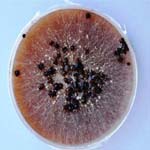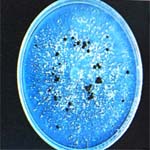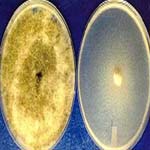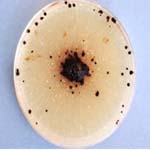|
Sheath Blight
(Rhizoctonia solani)
| Symptoms |
|
|
|
- The fungus affects the crop from tillering to heading stage.
- Initial symptoms are noticed on leaf sheaths near water level.
- On the leaf sheath oval or elliptical or irregular greenish grey spots are formed.
- As the spots enlarge, the centre becomes greyish white with an irregular blackish brown or purple brown border.
- Lesions on the upper parts of plants extend rapidly coalesing with each other to cover entire tillers from the water line to the flag leaf.
- The presence of several large lesions on a leaf sheath usually causes death of the whole leaf, and in severe cases all the leaves of a plant may be blighted in this way.
- The infection extends to the inner sheaths resulting in death of the entire plant.
- Older plants are highly susceptible.
- Five to six week old leaf sheaths are highly susceptible.
- Plants heavily infected in the early heading and grain filling growth stages produce poorly filled grain, especially in the lower part of the panicle.
- A yield loss of 25% was reported if the flag leaves are infected.
|
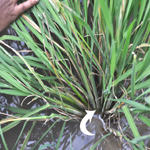 |
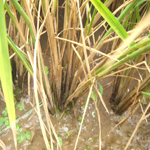 |
| Elliptical or Irregular Greenish Grey Spots on Sheaths |
Blightening of Sheath near Water Level |
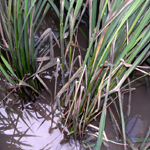 |
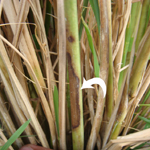 |
| Blightening of Sheath |
Discoloration of Sheath |
|
| Top |
| Management Strategies |
|
|
|
Preventive method
- Seed treatment with Pseudomonas fluorescens @ of 10g/kg of seed followed by seedling dip @ of 2.5 kg or products/ha dissolved in 100 litres and dipping for 30 minutes.
- Soil application of P.fluorescens @ of 2.5 kg/ha after 30 days of transplanting (This product should be mixed with 50 kg of FYM/Sand and then applied.
- Foliar spray of Pseudomonas fluorescens at 0.2% concentration ,commencing from 45 days after transplanting at 10 days interval for 3 times depending upon the intensity of disease.
|
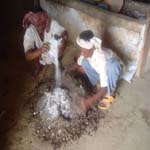 |
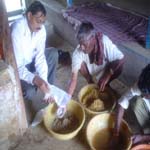 |
| Mixing of Pseudomonas with FYM |
Seed Treatment with pseudomonas |
Cultural methods
- Apply FYM 12.5 t/ha or green manure 6.25 t/ha to promote antagonistic microflora
- Avoid excess doses of fertilizers.
- Adopt optimum spacing.
- Eliminate weed hosts.
- Apply organic amendments.
- Avoid flow of irrigation water from infected fields to healthy fields.
- Deep ploughing in summer and burning of stubbles.
|
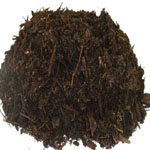 |
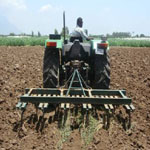 |
| Apply Organic Amendments |
Deep Summer Ploughing |
Chemical methods
- Control of sheath blight has been mainly through the use of foliar fungicides.
- Carbendazim (1 g/lit), Propiconazole (1ml/lit) may be applied.
- Spraying of infected plants with fungicides, such as Benomyl and Iprodione, and antibiotics, such as Validamycin and Polyoxin, is effective against the disease
- Spray Carbendazim 250 g or Chlorothalonil 1 kg or Edifenphos 1 lit/ha.
|
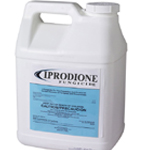 |
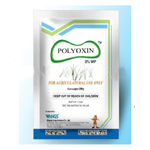 |
| Spray Iprodione |
Use Polyoxin Antibiotic |
| |
Top |
|




